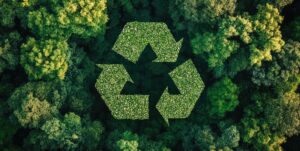
Case Study: LA County Uses Equity Principles to Transition Away from Fossil Fuels
Pam Sornson, JD
February 7, 2023
One of the barriers impeding progress from inequitable practices to fairer conventions is the presence of a false dichotomy: ‘There is no other way to do what we’re doing now, so there’s no reason to change our current practices.’ This position prioritizes the status quo over social and economic advancement, regardless of the actual opportunity to make meaningful change. It is just one of the obstacles to full social equity that Los Angeles County (County) is tackling in its strategy to transition away from fossil fuels.

Developing a Comprehensive Strategy for a Just Transition Away from Fossil Fuels in Los Angeles County
In 2021, the County elected to combine its focus on both the development of fair work opportunities with its goal of transitioning away from its reliance on fossil fuels. The initiative embraces the need for a switch to renewable, sustainable fuel sources while also minimizing the negative impact of the challenges that will undoubtedly arise in related industries as those transformations evolve.
The strategy follows the County’s adoption in 2019 of its ‘OurCounty’ sustainability plan. Considered one of the most progressive sustainability plans in the country, the OurCounty initiative couples a forward-thinking definition of ‘equity’ with 12 sustainability goals. Achieving all 13 objectives will help the County realize its ultimate goal: a healthy, thriving, financially secure economy that provides stability and mobility for all County communities.
First: Use the Achievement of ‘Equity’ as a Driver Toward Justice
The OurCounty plan begins with its definition of ‘equity,’ which it parses into four integral aspects:
Procedural equity embraces and engages local and regional stakeholders in developing region-wide plans, strategies, and actions to ensure all interests are recognized and represented.
Distributional equity oversees the distribution of county assets across all sectors of its constituents, with a focus on populations with the highest needs.
Structural equity institutionalizes accountability at all levels of leadership to witness, acknowledge, and reconstruct existing cultural and historical dynamics that prioritized privileged groups and caused chronic and cumulative disadvantages to subordinated populations.
Transgenerational equity considers the long-term impact of current decisions to prevent them from inappropriately burdening future generations with unnecessary and preventable consequences.
The definition seeks to address the multiple negative ramifications of previous governmental and social actions that have wreaked havoc on the region for decades. By incorporating these aspects into the overarching OurCounty plan, Los Angeles County can capture, embrace, and build on the assets, abilities, and skills of all its diverse populations in its quest for a more productive and inclusive economy.

Second: Knit Equity Principles into Each of the 12 Strategic ‘Clean Energy’ Goals
The goals describe how the County intends its residents to live and work as it weans off its reliance on oil and gas resources:
Goal 1: Residents will thrive in place with adequate access to natural resources (clean water, air, and soil) in safe and secure housing and communities. This goal aims specifically at the County’s former practice of ‘redlining’ home mortgage loans by minorities to keep them out of predominantly white neighborhoods.
Goal 2: Communities will attain a healthy and resilient physical infrastructure that respects the importance of proper interior insulation from heat and cold and an external tree canopy that cleans the air and provides shade.
Goal 3: The County’s land use and development activities will be based on sustainable principles and won’t unnecessarily or inappropriately displace settled communities.
Goal 4: Homeowners and businesses will be encouraged to embrace renewable resources for every possible purpose. The initiative builds a new reliance on ‘green’ energy as it moves away from petroleum products.
Goal 5: The goal recognizes and seeks to heighten protections for the County’s physical and geographical assets, including its islands, mountains, beaches, and coastlines. Human encroachment and poor ecological management practices threaten the health and welfare of the diverse flora and fauna of the region.
Goal 6: All County residents will enjoy the use of its parks, recreational areas, and public lands, which will be adapted to facilitate the access by all, regardless of ability.
Goal 7: Eliminating County-based fossil fuel production refineries and related services will also eliminate the threat of – and actual – pollution that those now generate. Replacing them with renewable options will result in cleaner air, reduced wildfire threats, and the amelioration of ongoing concerns posed by climate change.
Goal 8: A clean, convenient, and affordable public transportation system will enhance mobility options for all County inhabitants, increasing their quality of life while reducing the County’s dependence on cars.
Goal 9: This goal tackles concerns that arise when the current overuse of finite resources taxes their availability in the future. Water, in particular, is becoming more scarce for a variety of reasons, which compels better management of it for both today’s and tomorrow’s consumers.
Goal 10: Affordable food that is accessible, healthy, and safe should be available to all. This goal will help develop a sustainable food delivery system for all the County’s residents.
Goal 11: Ensuring accountable actions and decisions by public policymakers mandates that all the County’s diverse communities have a voice and presence in those discussions, their implementation, and management. This principle is especially significant in areas that have been marginalized by previous inequitable conventions.
Goal 12: Embrace and build on assets and inputs offered by all affected County populations, including the public, private, and non-profit sectors. The combined effort of the collaborative, inclusive partnership will enhance and improve the lives of all County dwellers while creating a clean and sustainable future for the region.
As the community evolves in this post-COVID era, it has the opportunity to develop resources that are newly revealed by that pandemic and those that will replace practices that are now obsolete in the current economy. Building the equity lens into the strategy provides not just more assets to include in the process (those of previously marginalized populations) but also new, fairer avenues to correct decades of previous transgressions. By adopting the ‘Just Transition’ strategy, Los Angeles County sets itself – and its communities – up to be leaders for the country and world in achieving a safe, fair, and clean economy that supports all its constituents.


